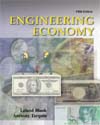The best method to economically evaluate and compare mutually exclusive alternatives is usually either the AW or PW method at the stated MARR. The choice depends, in part, upon the equal lives or unequal lives of the alternatives, and the pattern of the estimated cash flows, as summarized in Table 10–1. Public sector projects are best compared using the B/C ratio, but the economic equivalency is still AW or PW-based. Once the evaluation method is selected, Table 10–2 (also printed at the rear of the text with section references) can be used to determine the elements and decision guideline that must be implemented to correctly perform the study. If the estimated ROR for the selected alternative is needed, it is advisable to determine i* by using the IRR function on a spreadsheet after the AW or PW method has indicated the best alternative. The interest rate at which the MARR is established depends principally upon the cost of capital and the mix between debt and equity financing. The MARR should be set equal to the weighted average cost of capital (WACC). Risk, profit, and other factors can be considered after the AW, PW, or ROR analysis is completed and prior to final alternative selection. If multiple attributes, which include more than the economic dimension of a study, are to be considered in making the alternative decision, first the attributes must be identified and their relative importance assessed. Then each alternative can be value-rated for each attribute. The evaluation measure is determined using a model such as the weighted attribute method, where the measure is calculated by Equation [10.11]. The largest value indicates the best alternative. |



 2002 McGraw-Hill Higher Education
2002 McGraw-Hill Higher Education